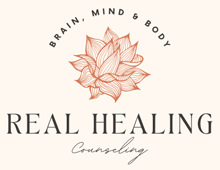Learning healthy boundaries in adulthood can feel overwhelming.
I will never forget how complicated it felt when I first learned that boundaries are more than just saying “no”. There are internal boundaries, external physical boundaries and sexual boundaries. It felt a bit complicated to me at first. So if you feel intimated like I did, I promise that you are not alone.
Pia Mellody describes boundaries as “a system of limit setting that protects a person from being a victim and contains a person so that they are not offensive to others.” She states that the purpose of boundaries are to contain and protect a person’s reality during intimacy and to establish identity.
In other words, healthy boundaries allow us to protect ourselves and to not violate others. Boundaries allow us to be ourselves and to be grounded in our truth or our reality even when in relationship with others.
I also refer to “our truth” or “our reality” as our experience. It’s comprised of our body and what we look like, our thoughts and how we give meaning to incoming data, our feelings and emotions, and our behavior, including what we do and do not do.
More on external boundaries:
The external system refers to controlling and protecting the body as well as controlling distance and touch.
An example Pia Mellody gives of an external physical boundary is “I have the right to control how close you get to me and whether you touch me and/or my personal property”. Other people also have the same right to control how close we get to them and whether we touch them or their personal property.
An example of an external sexual boundary given by Pia Mellody is “when someone is approaching me sexually, I have the right to control when, where, how, and with whom I am going to be sexual”. And others have the same right to choose and control when, where, how and with whom they are sexual.
Now onto internal boundaries
Internal boundaries (or psychological boundaries) refer to protecting our thoughts, feelings and behaviors. Pia Mellody states that internal boundaries can “act like a block or a filter”. Meaning that when we are in touch with our truth and honor our own feelings, thoughts and behaviors, we are able to hear feedback somebody may be giving and filter it through our own reality. We are able to ask ourselves, what about this is true? What about this is not true? We can take what resonates and leave the rest. We can even respect what someone else may be experiencing and sharing even if it doesn’t match our reality.
Boundary problems interfere with our ability to maintain healthy , intimate and fulfilling relationships. We do not want to be boundary-less, this leads to violating other people’s boundaries and not protecting ourselves. We also do not want to have walls for boundaries as this blocks us from having intimate relationships and connection.
We want to show up in a way that is respectful and loving to ourselves and to others. In practice this looks like being intentional about who, what, where, and when to be vulnerable. We want to respect the boundaries of others, too. In the same way we would want our boundaries respected.
The healthier our boundaries, the safer we are to feel soft, to feel vulnerable, to feel connected, to be present, to be fully alive.
Boundary mantras:
-
I am allowed to say “no”.
-
I am allowed to say “yes”.
-
I am allowed to choose my own beliefs about spirituality and/or religion.
-
I am allowed to respect the opinions of others without taking them on as my own.
-
I am allowed to respect someone else’s reality even if it doesn’t match up with my own.
-
I am allowed to believe what I believe and so are you.
-
I am allowed to feel what I feel and so are you.
-
I am allowed to think what I think and so are you.
-
I am allowed to not be open for feedback and so are you.
Keep in mind that just because we set boundaries doesn’t mean that people are going to respect them. We’ll talk more about maintaining our boundaries soon. But for now, practice, practice, practice. You may also feel guilty. I often find that guilt can be a withdrawal symptom of codependency. Keep going.
It is important to note that young children do not have the capacity to set healthy boundaries and need adults to protect them as well as teach them how to set healthy boundaries. I will be writing soon about the implications this has on children and the impact of growing up in a family where boundaries were non-existent or too rigid.

